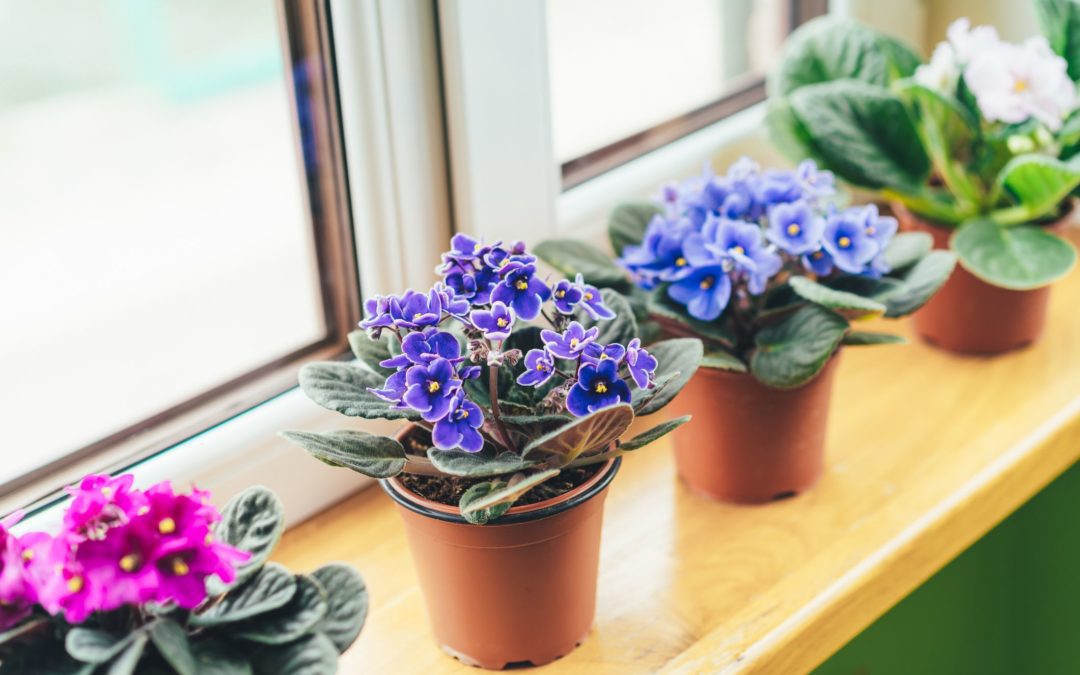Even though it’s barely started, we’re getting a bit sick of winter. The damp, gray days contribute to cases of cabin fever and longing for the sight of some swelling buds. Either we need to take a tropical vacation or direct some of this untapped energy towards an indoor gardening project.
One of the most recognized flowering houseplants has to be the African Violet. Didn’t everyone’s grandmother have a couple of these growing on her kitchen windowsill? Modern hybrids have come a long way as breeders continue to extend the color range and select for symmetrical foliage growth. Blooms are larger and more prolific. There are miniature varieties, trailing forms and novelty cultivars with variegated foliage and speckled flowers. Violets are great subjects for plant collectors, and many clubs and societies exist, devoted solely to the culture and hybridizing of this old-fashioned bloomer.
African Violets belong to the Gesneriad family, which is a bountiful source of diverse blooming plants that can be successfully grown in the often-challenging home environment. Other members of this family include lipstick plants, goldfish vines, gloxinias and chiritas. None of these plants are foolproof, but with some extra, you can bring all of these varieties into bloom and achieve some major garden bragging rights.
African Violets are classed in the genus Saintpaulus, named for Baron Walter von Saint Pail-Illaire, who sent seeds to his father, a German botanist. They hail from the foggy cloud forests of tropical Africa, so you must keep them out of cold winter drafts. Bright, indirect light is preferred. Some direct sun in the winter is appreciated when our days are cloudy and day lengths are short, but keep them out of direct sun in the summer.
Violets and their close relatives have fuzzy leaves while the lipstick vines have plump succulent foliage. All are subject to spotting from cold water. The solution to this is to water from the bottom. Wait until the soil surface feels dry to the touch. This is especially important in the winter when plants are not using as much water. Humidity is also an issue in the winter for this plant family. Levels of 40-50% will reward you with more flowers and healthier leaf growth. Raising the humidity is best accomplished by using a pebble tray under your plants that has a small amount of water in the bottom. Remember to clean the tray regularly to avoid fungal problems.
Regular fertilizing is needed to produce those show-winning blooms. Unlike foliage houseplants, Gesneriads like to be on a constant feed program. Feed each watering with a dilute solution of a balanced fertilizer. The brand isn’t an issue. Everyone has their own favorite. The important point is that you fertilize regularly.
One reason that violets remain so popular is the ease of propagation. Start by removing a leaf from the plant you want to reproduce. Choose one that’s midsize and not too old. Cut the top third of the leaf off with a clean, sharp knife. Next, cut the leaf stem at an angle, leaving about ½-inch. Stick the stem into a small container of moistened, lightweight potting mix, pushing it in up to the bottom of the leaf blade and lightly firm the soil mix around it. Place the pot into a clear container or plastic bag and put it in a bright, warm location. Ina few weeks you will begin to see plantlets starting to grow. When the babies are large enough to handle safely, separate them into individual pots and start your collection.
If you find yourself bitten by the collecting bug, consider joining a plant specific garden club this year. There are many that meet in the Madison area. You can get lots of valuable information from other members. It’s a great way to learn from the ground up if you’re a novice, and a wonderful way to share your knowledge and passion if you’re an expert. Besides, we gardeners are a fun bunch to hang out with.

